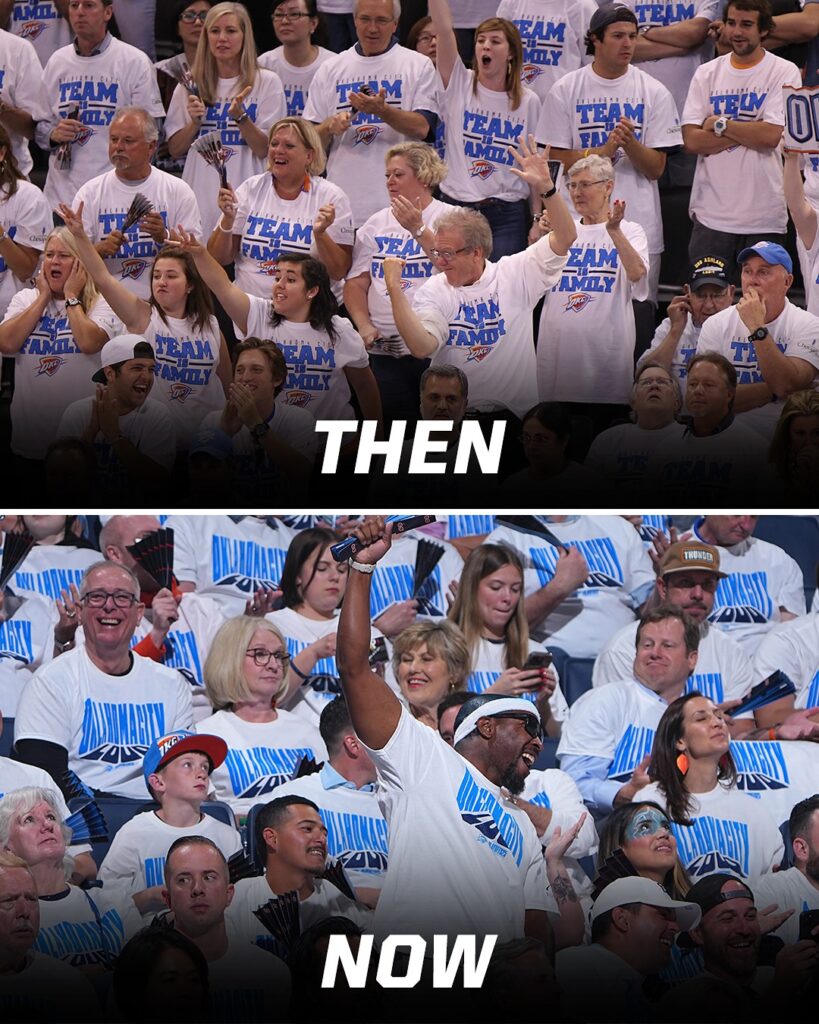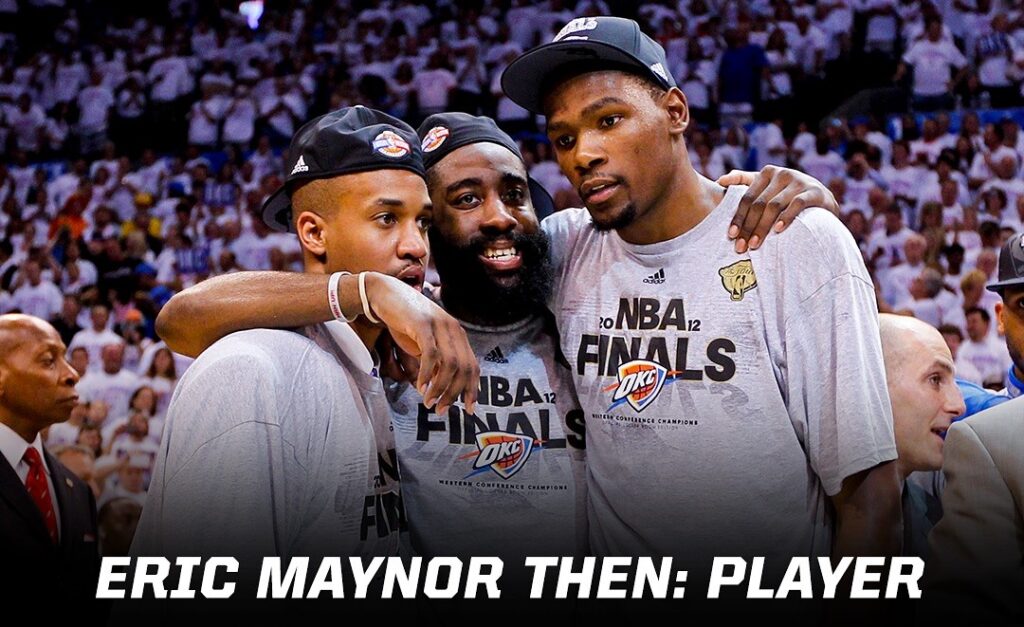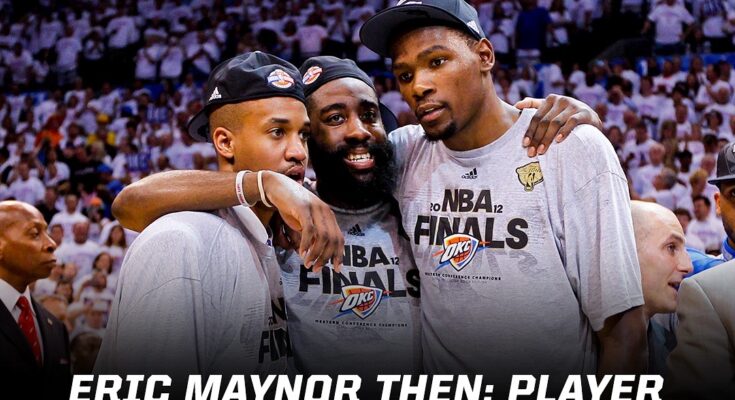
The NBA Finals is always a spectacle—an epic culmination of months of battles, buzzer-beaters, and bold declarations. But this year, as the 2025 Finals tip off on Thursday, June 5th on ABC 🍿, fans can’t help but reflect on how far the league has come. The comparisons are already flying: 2012 vs. 2025. Two very different eras, two different styles of basketball, yet both embody the heart of what makes the NBA so captivating—superstars, storylines, and the chase for greatness.
Back in 2012, the league was undergoing a dramatic shift. The Miami Heat’s Big Three—LeBron James, Dwyane Wade, and Chris Bosh—were on a mission to redeem themselves after a bitter loss in the 2011 Finals. LeBron, still chasing his first title, was the league’s most scrutinized player. Across the court stood the young and hungry Oklahoma City Thunder, featuring Kevin Durant, Russell Westbrook, and James Harden. That Finals series was electric, a clash between an all-star super team and a rising dynasty in the making.
Fast-forward to 2025, and the landscape has evolved. The players have changed, the pace is faster, the spacing is wider, and the three-point shot has taken center stage. But the stakes remain the same: legacy, history, and the right to lift the Larry O’Brien Trophy.
So how does 2012 stack up against 2025?

Let’s start with star power, the driving force of any Finals. In 2012, you had four future MVPs—LeBron, KD, Westbrook, and Harden—all under 30. It was an explosion of talent, with athleticism and scoring reaching new heights. LeBron was the centerpiece, averaging nearly a triple-double and finally delivering a dominant Finals performance that silenced his critics and earned him his first ring.
In 2025, the stars shine just as brightly, though their profiles are different. Jayson Tatum has emerged as a polished, playoff-hardened leader. Luka Dončić dazzles with a mix of old-school craft and modern range. Victor Wembanyama, the 7’4″ unicorn, has entered the Finals stage as the most hyped rookie-turned-superstar since LeBron himself. There’s even an argument that the 2025 cast is more globally diverse and stylistically versatile than its 2012 counterpart. If 2012 was power and pace, 2025 is finesse, flexibility, and fluidity.
The style of play is another stark contrast. In 2012, the mid-range jumper still had a place. Iso-heavy possessions and half-court sets dominated. The Heat thrived on high pick-and-rolls and strong-side overloads, while the Thunder relied on athletic explosions and fast breaks. Defensive schemes were aggressive but simpler, with more emphasis on man-to-man battles.

By 2025, analytics have taken full control. Teams shoot more threes than ever, emphasize positionless basketball, and switch everything defensively. The Finals now feature 7-footers who can handle the ball, guards who rebound like centers, and schemes that shift possession by possession. It’s chess, not checkers.
Then there’s the cultural impact. The 2012 Finals happened at a time when social media was just beginning to shape sports discourse. Twitter reactions, memes, and instant analysis were just starting to amplify every play. LeBron’s “not one, not two…” comment echoed through early sports blogs and message boards.
In 2025, the Finals are a global, digital phenomenon. Every angle is analyzed in real-time, with AI-generated breakdowns, international broadcasts in dozens of languages, and immersive AR experiences that put fans “on the court.” Players have massive personal brands. Highlights go viral before the possession ends. The game is no longer just 48 minutes—it’s a 24/7 experience, with narratives crafted in podcasts, YouTube deep dives, and TikTok edits.
Yet for all the changes, one thing remains the same: greatness rises when it matters most. Just like LeBron did in Game 6 against Boston in 2012, someone in 2025 will seize the moment. Whether it’s Tatum drilling step-backs under pressure, Luka hitting game-winners with his trademark smirk, or Wemby swatting shots like a futuristic Hakeem, the Finals will once again deliver a defining legacy moment.
It’s poetic that we can compare these two eras on the eve of the 2025 Finals. Because 2012 wasn’t just a great Finals—it was a transition point. It was the moment LeBron’s dynasty began. It was the peak of young OKC before their tragic breakup. It was a reminder that Finals aren’t just about winning—they’re about what comes after. The pressure. The expectations. The journey.
And in 2025, we might be watching the beginning of another era. Will Tatum become the new face of the league by finally delivering Boston a banner? Will Wemby fulfill the prophecy of being the next generational great? Could Luka finally silence the critics who doubted his defense and leadership? Or will an unexpected hero emerge—just like Kawhi did in 2014 or Giannis in 2021?
The storylines are endless, and that’s the beauty of it all.
So mark your calendars. The #NBAFinals begin Thursday, June 5th on ABC 🍿, and we’re not just watching a game—we’re witnessing history. Whether you’re a fan from the 2012 era or a newcomer in 2025, this clash of talent, legacy, and evolution reminds us why we love the game. Because no matter how much changes, the Finals will always be where legends are born.



